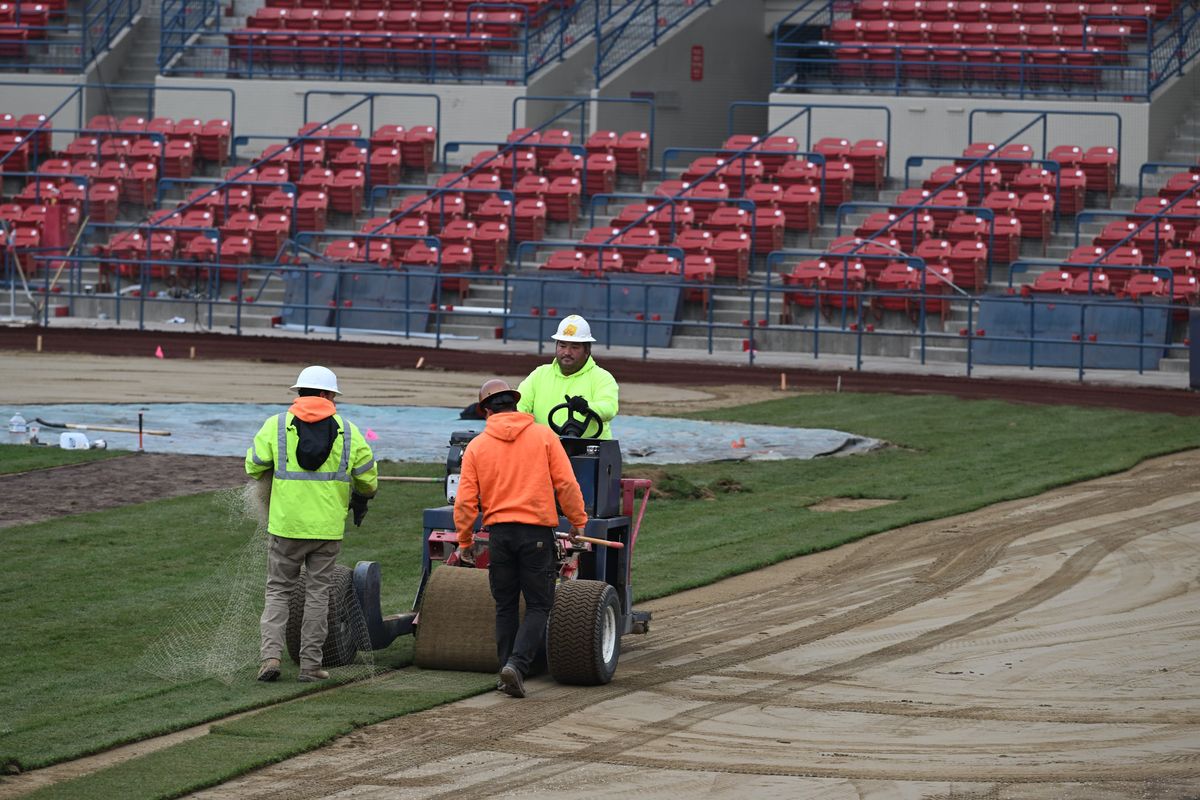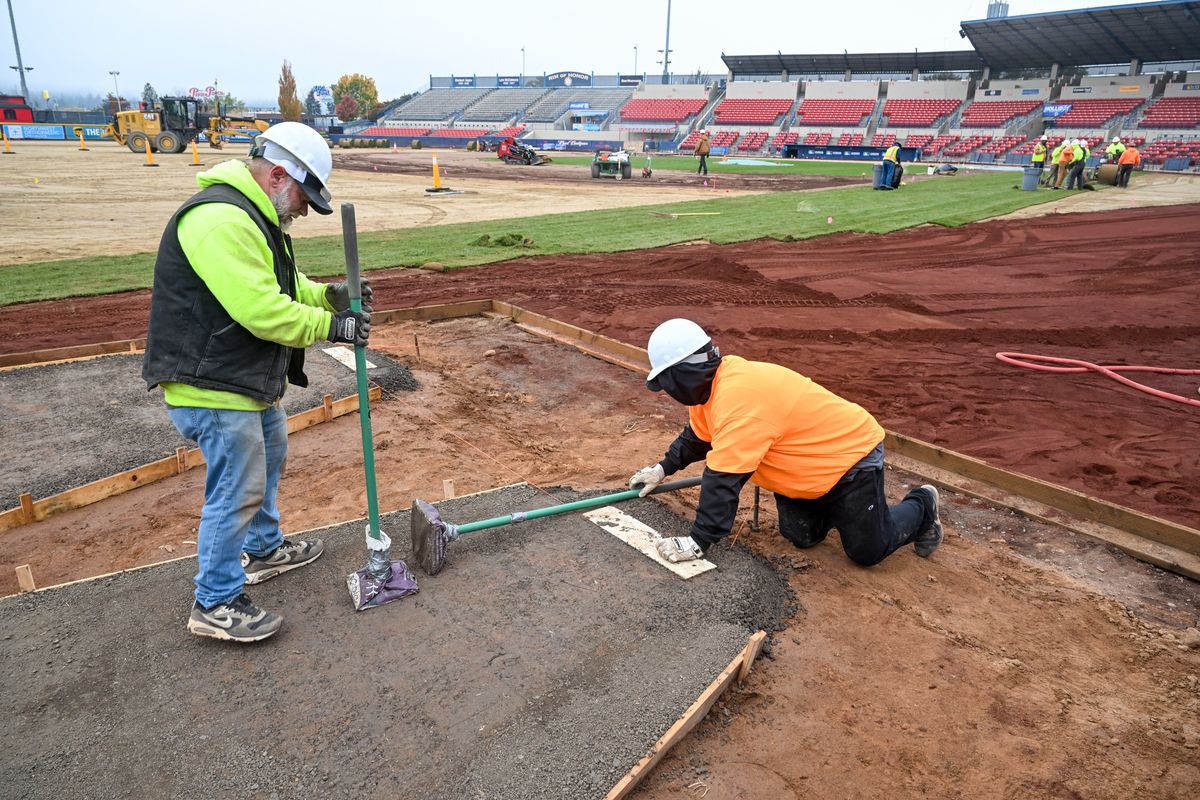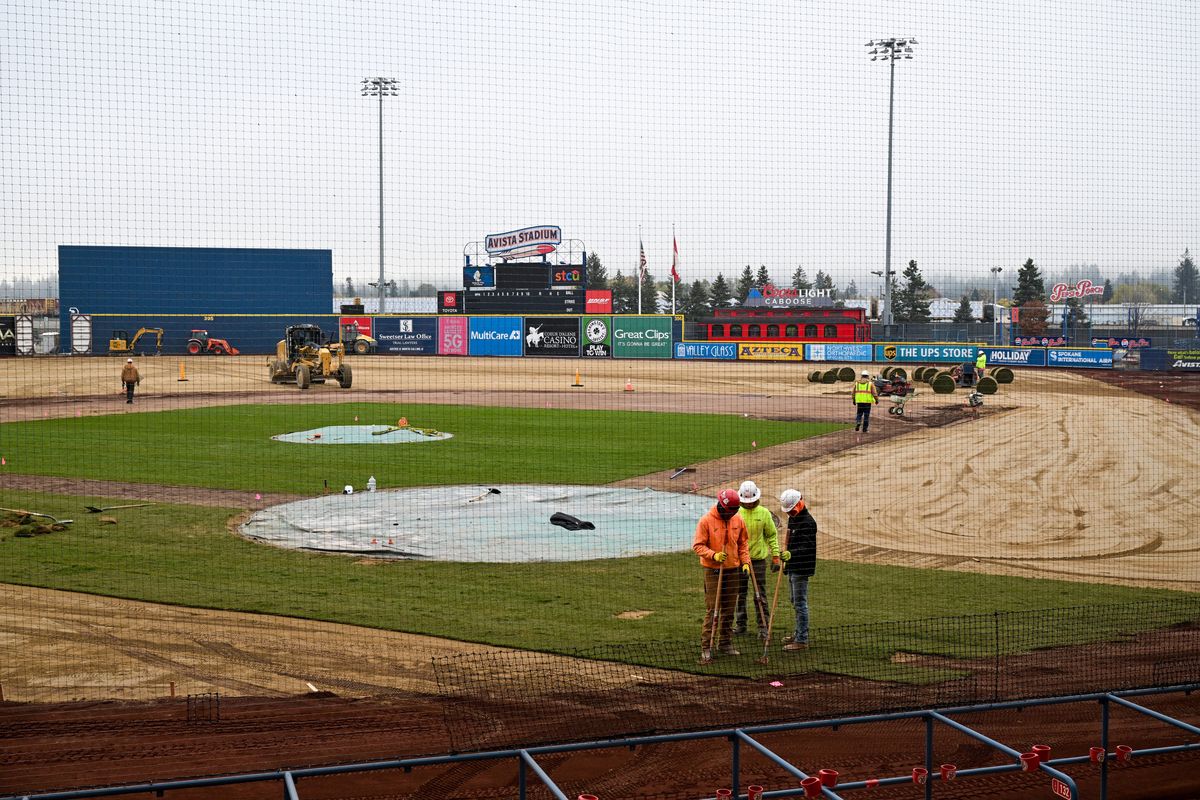Avista Stadium receives new playing surface, dugouts in ‘Phase 2’ of MLB-mandated stadium renovations
The Spokane Indians' head groundskeeper Tony Lee, left, works with Chad Mulholland, right, to shape the new home bullpen mounds at Avista Stadium Wednesday, Oct. 23, 2024 as other crews begin laying new sod on field, part of a massive makeover of the field. Mulholland was the team's groundskeeper before Lee, but now works for the Florida Marlins at loanDepot Park. (Jesse Tinsley/THE SPOKESMAN-REVI)
The next time you step into Avista Stadium as a fan, it might feel a little different. Some ways will be obvious – some not so much.
But every change will be significant and mandatory.
This week at the stadium, crews are laying sod which will create the blanket of emerald-green grass from which the 2025 Spokane Indians will drop bunts, chase fly balls and try to leg out triples.
As part of the MLB Player Development Contract each affiliated minor league baseball organization was required to sign after the recent restructuring of the minors, MLB mandated improvements to player safety and working conditions throughout baseball.
Those changes under Phase 1 at Avista Stadium included installing LED lights, upgrading the clubhouses, and providing separate dining and workout facilities, which were mostly completed by last opening day – to rave reviews by players, coaches and staff.
This offseason, the Indians are replacing the playing surface and drainage, expanding the dugouts, affixing padding to the outfield and foul territory walls, replacing the netting behind home plate, extending protective netting down the foul lines and replacing the existing foul poles with new regulation-size poles.
The project is headed by Lydig Construction, A M Landshaper, SPVV Landscape Architecture and ALSC Architects.
Work on the project started before the season was over – crews were doing demolition on the Tuesday following the last regular-season home game. The Indians were relegated to playing their home playoff games at Patterson Baseball Complex at Gonzaga as a result.
But that early work has paid off, as the mild autumn the region enjoyed allowed crews to beat the weather-enforced deadline of the first hard freeze.
The biggest thing about the new playing surface, besides bringing the drainage system up to modern standards, is the leveling of the outfield. Before the renovations, the field sloped down approximately 30 inches in center field compared to the corners. The once-or-twice a season fan might not notice the difference, but for regulars – and most important, the players – it will be a stark contrast.
“Major League Baseball has very strict slope and drainage standards, which our existing field did not meet,” team president Chris Duff said. “Decreasing the slope of the field improves player safety and the overall professionalism and playability of the field at Avista Stadium.”
But that’s not all that going on at the stadium.
The Indians brought in an expert to help with the constriction of the pitching mounds – former head groundskeeper Chad Mulholland, who is now Director of Grounds at Miami’s loanDepot Park, home of the Marlins. Mullholland is working hand in hand with current groundskeeper Tony Lee to make sure the mounds are in place before the long winter months.
“Chad has been a mentor to Tony for over two decades and is an expert in building pitching mounds,” Duff said. “Chad wanted to be a part of the field rebuild.”
Crews are also working to renovate and expand the dugouts, to twice their previous depth. The retainer wall between the dugout and seating area is permanent, so increasing the size of the dugouts means extending them farther into the field, reducing the amount of foul territory around the infield.
The sod, which was grown in Spokane County at Ray’s Turf Farm, should be in by the end of the week. The rest of the Phase 2 renovations are expected to be completed before opening day 2025.







